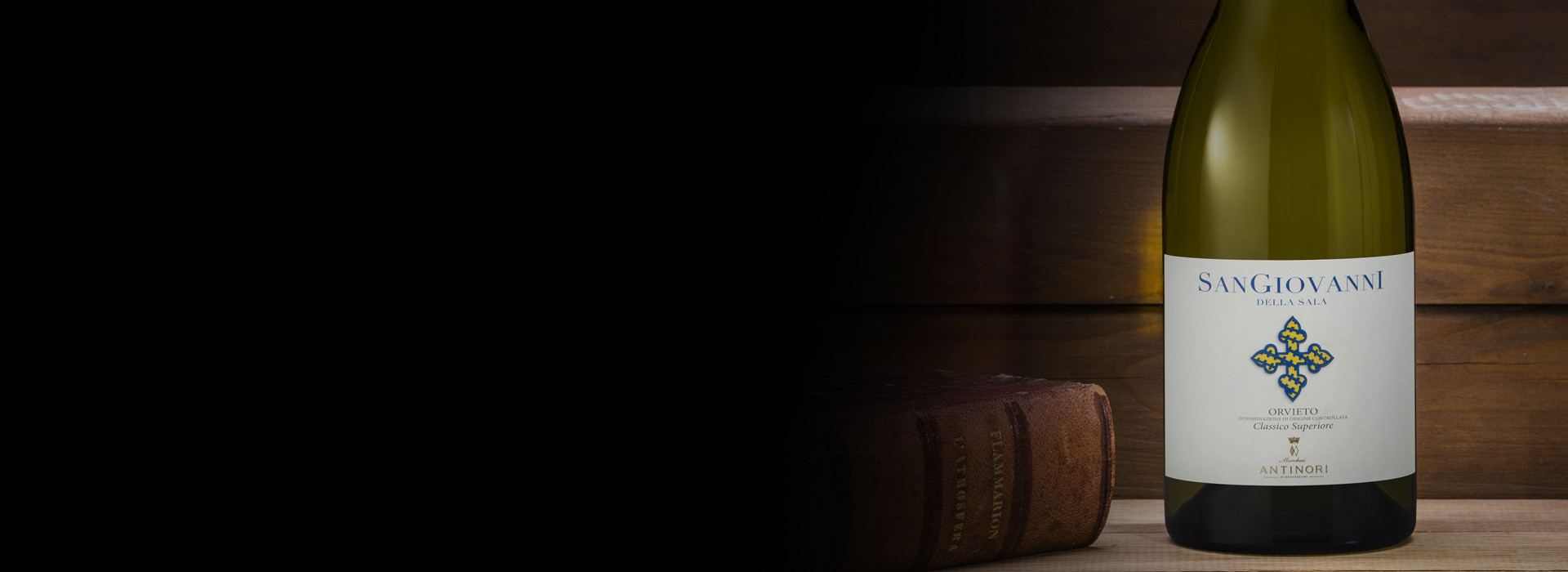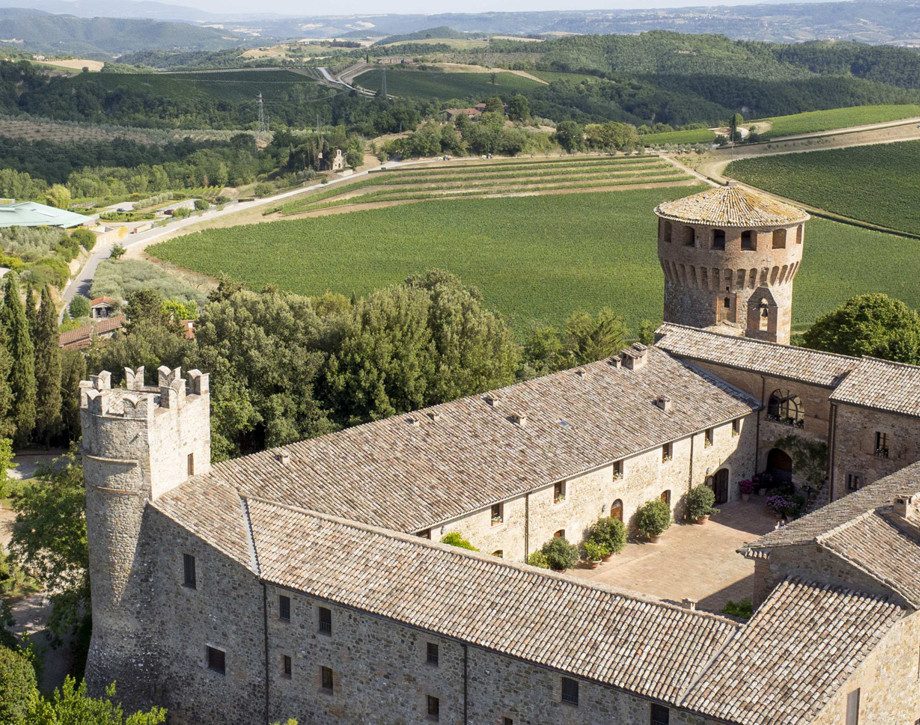San Giovanni Della Sala

Climate
The climate of the 2106 vintage was characterized by a mild winter with regular rainfall followed by a cool spring season which allowed the bud burst and the flowering to take place in a normal fashion. June saw a brief drop in temperatures, leading to a slight slowing of plant growth and development , but which came back to balance in July due to a warm summer with positive temperature swings between daytime heat and evening and nighttime coolness. This led to a wine with an interesting aromatic notes. The harvest of the Grechetto, the Viognier, and the Pinot Blanc for the wine began towards the second half of September and the picking finished with the picking of the Procanico.
Vinification
The grapes were fermented separately, variety by variety. A part of the crop was fermented using cold maceration techniques (with the must in contact with the skins for six hours at a temperature of 50° Fahrenheit, or 10° centigrade) . This must was added to that obtained from the direct pressing of the grapes and the bend went into stainless steel tanks, where it fermented at a temperature held to 61° Fahrenheit (16° centigrade). After the initial rackings, the wine remained on its lees in order to further heighten its structure, elegance, and crispness up until the moment of its blending and then bottling. Alcohol.
Historical Data
San Giovanni is produced from the vineyards surrounding the medieval castle at Castello della Sala and is a blend of indigenous varieties, Grechetto, Procanico with Pinot Blanc and Viognier; a new interpretation of the Orvieto Classico appellation. The first vintage of Castello della Sala’s Orvieto Classico was 1990.
Tasting Notes
A light straw yellow with greenish highlights, the nose offers notes of peaches, citrus fruit, and pineapple. The wine is a balanced one with a fine harmony between structure and acidity. The finish is lively and of good length and persistence.

The Wine
San Giovanni comes from Castello della Sala’s vineyards and is made with a blend of Grechetto, Procanico, Pinot Bianco and Viognier, a contemporary representation of Orvieto Classico.

Climate
The climate of the 2106 vintage was characterized by a mild winter with regular rainfall followed by a cool spring season which allowed the bud burst and the flowering to take place in a normal fashion. June saw a brief drop in temperatures, leading to a slight slowing of plant growth and development , but which came back to balance in July due to a warm summer with positive temperature swings between daytime heat and evening and nighttime coolness. This led to a wine with an interesting aromatic notes. The harvest of the Grechetto, the Viognier, and the Pinot Blanc for the wine began towards the second half of September and the picking finished with the picking of the Procanico.
Vinification
The grapes were fermented separately, variety by variety. A part of the crop was fermented using cold maceration techniques (with the must in contact with the skins for six hours at a temperature of 50° Fahrenheit, or 10° centigrade) . This must was added to that obtained from the direct pressing of the grapes and the bend went into stainless steel tanks, where it fermented at a temperature held to 61° Fahrenheit (16° centigrade). After the initial rackings, the wine remained on its lees in order to further heighten its structure, elegance, and crispness up until the moment of its blending and then bottling. Alcohol.
Historical Data
San Giovanni is produced from the vineyards surrounding the medieval castle at Castello della Sala and is a blend of indigenous varieties, Grechetto, Procanico with Pinot Blanc and Viognier; a new interpretation of the Orvieto Classico appellation. The first vintage of Castello della Sala’s Orvieto Classico was 1990.
Tasting Notes
A light straw yellow with greenish highlights, the nose offers notes of peaches, citrus fruit, and pineapple. The wine is a balanced one with a fine harmony between structure and acidity. The finish is lively and of good length and persistence.

Castello della Sala
Castello della Sala is located in the Umbria region, not far from the Tuscan border, about 18 kilometers from the historic city of Orvieto. The Medieval castle’s property extends over an area of 600 hectares (1482 acres), 200 hectares (495 acres) are planted with vineyards at an altitude that varies between 220 and 470 meters above sea level (722/1541 feet) on the gently rolling hillsides that characterize the beautiful countryside in this area. Castello della Sala is the perfect place for growing white varieties. The vines grow in clay and calcareous based soils, rich in fossil shells, and they are well exposed to the rising of the sun with an excellent difference of temperature between day and night. The one exception to the rule is Pinot Noir, the only red variety that has found in this area ideal growing conditions to best express its full potential.

Soil
Soils originating from sedimentary deposits of marine fossils with veins of clay.
















